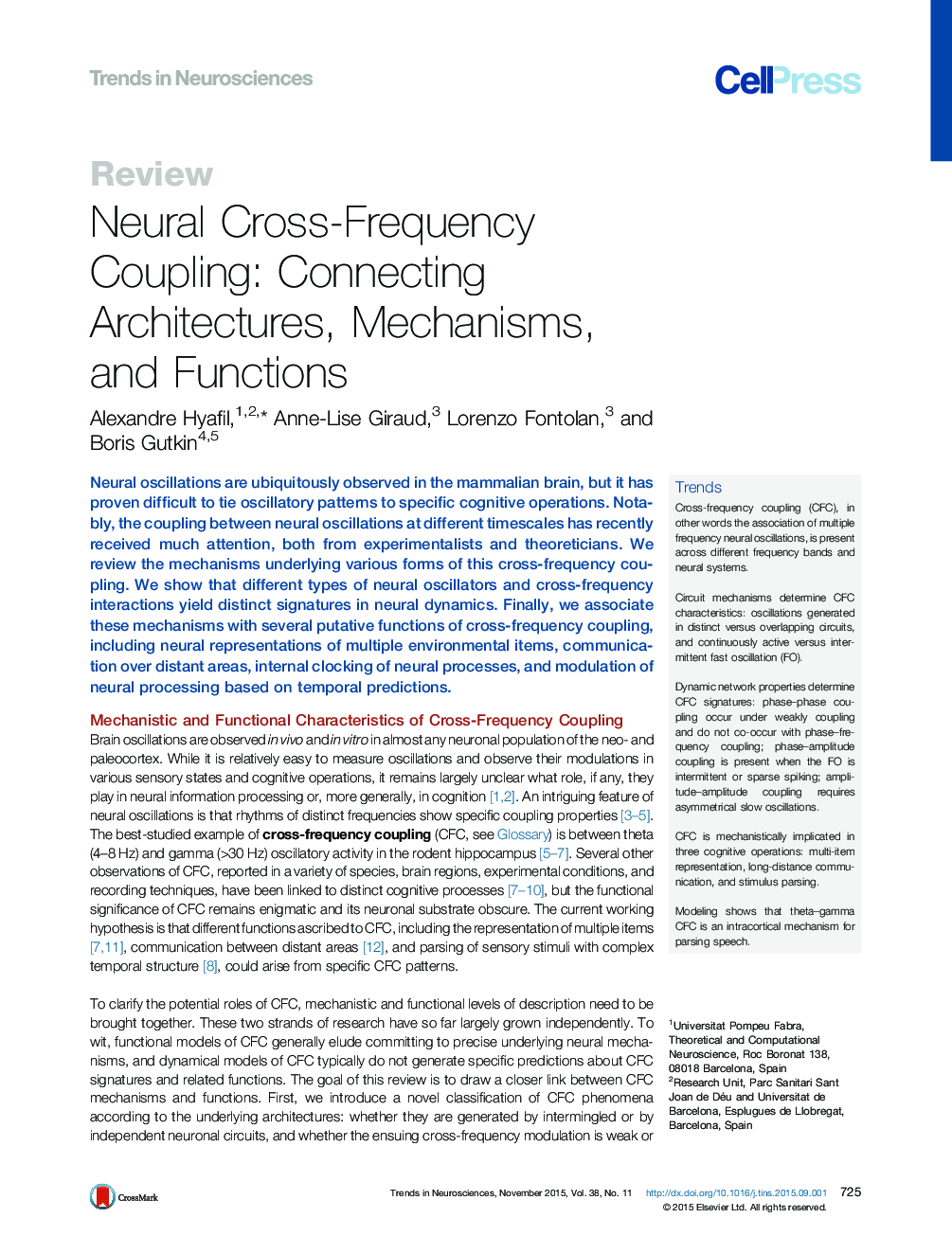| Article ID | Journal | Published Year | Pages | File Type |
|---|---|---|---|---|
| 4354248 | Trends in Neurosciences | 2015 | 16 Pages |
Neural oscillations are ubiquitously observed in the mammalian brain, but it has proven difficult to tie oscillatory patterns to specific cognitive operations. Notably, the coupling between neural oscillations at different timescales has recently received much attention, both from experimentalists and theoreticians. We review the mechanisms underlying various forms of this cross-frequency coupling. We show that different types of neural oscillators and cross-frequency interactions yield distinct signatures in neural dynamics. Finally, we associate these mechanisms with several putative functions of cross-frequency coupling, including neural representations of multiple environmental items, communication over distant areas, internal clocking of neural processes, and modulation of neural processing based on temporal predictions.
TrendsCross-frequency coupling (CFC), in other words the association of multiple frequency neural oscillations, is present across different frequency bands and neural systems.Circuit mechanisms determine CFC characteristics: oscillations generated in distinct versus overlapping circuits, and continuously active versus intermittent fast oscillation (FO).Dynamic network properties determine CFC signatures: phase–phase coupling occur under weakly coupling and do not co-occur with phase–frequency coupling; phase–amplitude coupling is present when the FO is intermittent or sparse spiking; amplitude–amplitude coupling requires asymmetrical slow oscillations.CFC is mechanistically implicated in three cognitive operations: multi-item representation, long-distance communication, and stimulus parsing.Modeling shows that theta–gamma CFC is an intracortical mechanism for parsing speech.
